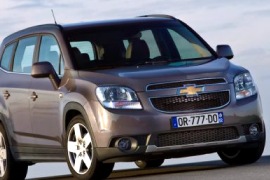CHEVROLET Orlando Models/Series Timeline, Specifications & Photos
First production year: 2010
Engines: Gasoline, Diesel
Body style: Wagon (station wagon, estate, combi, touring)
With its experience in building minivans, Chevrolet thought that it could lure customers outside the U.S. to buy them. Yet, the timing was wrong.
GM unveiled the Orlando in 2008, but it delayed the official launch on the market for another two years due to the financial crisis. But when it did it, the sales were less than expected. It was one of the reasons why GM withdrew from the European market. The car was right, but the time was wrong.
The Orlando's look was not as dull as many other MPVs on the market. Its big headlights, the split grille with the bow-tie badge in the middle, and the crossover stance were spot on. In addition, the large doors allowed for very easy ingress and egress to the cabin. At the back, the wide tailgate could serve as an oversized umbrella if needed. But the best part of the vehicle was the interior.
Inside, there was room for seven. Even the rearmost seats could fit full-grown adults for short distances. At the front, the high seating position helped the driver's visibility. There were plenty of storage areas, including a hidden one behind the stereo controls on the center stack. The middle row was wide enough to fit three adults, and it could fold to expand the storage area. In the trunk, the carmaker installed a flat-folding set of two jump seats.
Under the car's skin was the Delta II platform used for the Chevrolet Cruze and the European Opel/Vauxhall Zafira. Its independent suspension in all corners helped the car get a comfortable ride. Under the hood, the Orlando offered a choice of three engines: one gasoline and two turbo-diesels.
